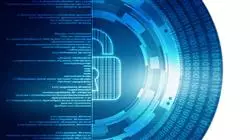University certificate
The world's largest faculty of information technology”
Description
Give the best answer in computer security and prevent companies from falling into social engineering with this Postgraduate diploma"

Implementing IT security policies entails a cost for companies, but they are willing to bear it due to the high losses that hacking of their systems entails for them, compromising their correct operation and the provision of services to their customers. A key role in this scenario is played by IT professionals.
This Postgraduate diploma provides students with in-depth learning in Computer Security Defense Measures, which start with an analysis of the threats and then classify them correctly in order to find out where a company is more or less vulnerable. Likewise, the teaching team specialized in this subject will provide the essential tools to carry out a computer forensic analysis. In this way, the detection of incidents through IDS/IPS systems and their treatment in SIEM up to the notification and escalation process will be shown.
In order to be at the forefront of security defense, IT professionals will develop, in this qualification, techniques to mitigate denial of service, Session Hacking and attacks on web applications. All this, in a 100% online teaching mode, which allows students to balance their professional work with a program that offers multimedia and innovative content. They only need a device with an Internet connection to access a study plan that can be taken at their own pace.
Effectively implement security policies against Session Hijacking, Hacking Web Servers or Mobile Platforms thanks to this Postgraduate diploma"
This Postgraduate diploma in ##TITULO## contains the most complete and up-to-date program on the market. The most important features include:
- The development of practical cases presented by IT security experts
- The graphic, schematic and practical contents of the book provide technical and practical information on those disciplines that are essential for professional practice
- Practical exercises where self-assessment can be used to improve learning
- Its special emphasis on innovative methodologies
- Theoretical lessons, questions to the expert, debate forums on controversial topics, and individual reflection assignments
- Availability to access content from any fixed or portable device with an Internet connection
Controls the ISO 27035 standard and meets the requirements for a correct incident management. Enroll in this Postgraduate diploma"
The program’s teaching staff includes professionals from the sector who contribute their work experience to this educational program, as well as renowned specialists from leading societies and prestigious universities.
The multimedia content, developed with the latest educational technology, will provide the professional with situated and contextual learning, i.e., a simulated environment that will provide immersive education programmed to learn in real situations.
This program is designed around Problem-Based Learning, whereby the professional must try to solve the different professional practice situations that arise throughout the program. For this purpose, students will be assisted by an innovative interactive video system created by renowned and experienced experts.
Grow in your professional career with a program that will allow you to deepen in the analysis and control of computer threats"

You are just one click away from enrolling in a Postgraduate diploma that will open up more career opportunities"
Syllabus
The faculty of this Postgraduate diploma has developed a study plan in which it goes into each of the phases of the development of a security plan that addresses threats to computer systems. In this way it goes into detail on the audit of the threat, its categorization, the management of the incident and the latest tools for its detection. It also deals with the problems caused by social engineering in the companies that are affected. All this, with an updated multimedia material that facilitates the understanding of the content, and with a Relearning system, which makes it possible to acquire a solid knowledge.

Access to a 100% online teaching, flexible, that allows you to go at your own pace. Balance your personal life with quality teaching. Sign up"
Module 1. Security Policies for the Analysis of Threats in Computer Systems
1.1. Threat Management in Security Policies
1.1.1. Risk Management
1.1.2. Security Risk
1.1.3. Threat Management Methodologies
1.1.4. Implementation of Methodologies
1.2. Phases of Threat Management
1.2.1. Identification
1.2.2. Analysis
1.2.3. Localization
1.2.4. Safeguard Measures
1.3. Audit Systems for Threat Localization
1.3.1. Classification and Information Flow
1.3.2. Analysis of Vulnerable Processes
1.4. Risk Classification
1.4.1. Types of Risk
1.4.2. Calculation of Threat Probability
1.4.3. Residual Risk
1.5. Risk Treatment
1.5.1. Implementation of Safeguard Measures
1.5.2. Transfer or Assume
1.6. Control Risks
1.6.1. Continuous Risk Management Process
1.6.2. Implementation of Security Metrics
1.6.3. Strategic Model of Information Security Metrics
1.7. Practical Methodologies for Threat Analysis and Control
1.7.1. Threat Catalog
1.7.2. Catalog of Control Measures
1.7.3. Safeguards Catalog
1.8. ISO 27005
1.8.1. Risk Identification
1.8.2. Risk Analysis
1.8.3. Risk Evaluation
1.9. Risk, Impact and Threat Matrix
1.9.1. Data, Systems and Personnel
1.9.2. Threat Probability
1.9.3. Magnitude of Damage
1.10. Design of Phases and Processes in Threat Analysis
1.10.1. Identification of Critical Organizational Elements
1.10.2. Determination of Threats and Impacts
1.10.3. Impact and Risk Analysis
1.10.4. Methods
Module 2. Security Incident Management Policies
2.1. Information Security Incident Management Policies and Enhancements
2.1.1. Incident Management
2.1.2. Responsibilities and Procedures
2.1.3. Event Notification
2.2. Intrusion Detection and Prevention Systems (IDS/IPS)
2.2.1. System Operating Data
2.2.2. Types of Intrusion Detection Systems
2.2.3. Criteria for IDS/IPS Placement
2.3. Security Incident Response
2.3.1. Data Collection Procedure
2.3.2. Intrusion Verification Process
2.3.3. CERT Organizations
2.4. Intrusion Attempt Notification and Management Process
2.4.1. Responsibilities in the Notification Process
2.4.2. Classification of Incidents
2.4.3. Resolution and Recovery Process
2.5. Forensic Analysis as a Security Policy
2.5.1. Volatile and Non-Volatile Evidence
2.5.2. Analysis and Collection of Electronic Evidence
2.5.2.1. Analysis of Electronic Evidence
2.5.2.2. Collection of Electronic Evidence
2.6. Intrusion Detection and Prevention Systems (IDS/IPS) Tools
2.6.1. Snort
2.6.2. Suricata
2.6.3. SolarWinds
2.7. Event Centralizing Tools
2.7.1. SIM
2.7.2. SEM
2.7.3. SIEM
2.8. CCN-STIC Security Guide 817
2.8.1. Cyber Incident Management
2.8.2. Metrics and Indicators
2.9. NIST SP800-61
2.9.1. Computer Security Incident Response Capability
2.9.2. Handling an Incident
2.9.3. Coordination and Information Sharing
2.10. ISO 27035
2.10.1. ISO 27035 Standard. Incident Management Principles
2.10.2. Incident Management Plan Preparation Guidelines
2.10.3. Incident Response Operations Guides
Module 3. Practical Implementation of Security Policies against Attacks
3.1. System Hacking
3.1.1. Risks and Vulnerabilities
3.1.2. Countermeasures
3.2. DoS Attack
3.2.1. Risks and Vulnerabilities
3.2.2. Countermeasures
3.3. Session Hijacking
3.3.1. The Process of Hijacking
3.3.2. Hijacking Countermeasures
3.4. Evading IDS, Firewalls and Honeypots
3.4.1. Avoidance Techniques
3.4.2. Implementation of Countermeasures
3.5. Hacking Web Servers
3.5.1. Attacks on Web Servers
3.5.2. Implementation of Defense Measures
3.6. Hacking Web Applications
3.6.1. Attacks on Web Applications
3.6.2. Implementation of Defense Measures
3.7. Hacking Wireless Networks
3.7.1. Vulnerabilities in Wi-Fi Networks
3.7.2. Implementation of Defense Measures
3.8. Hacking Mobile Platforms
3.8.1. Vulnerabilities of Mobile Platforms
3.8.2. Implementation of Countermeasures
3.9. Ramsonware
3.9.1. Ramsonware Vulnerabilities
3.9.2. Implementation of Countermeasures
3.10. Social Engineering
3.10.1. Types of Social Engineering
3.10.2. Countermeasures for Social Engineering

Case studies and multimedia content are the most powerful tools of this Postgraduate diploma. Get trained in this field and advance your career”
Postgraduate Diploma in Computer Security Defense Measures
Computer security defense measures are techniques and practices used in the field of cybersecurity to protect computer systems and networks against malicious attacks and online threats. These defense measures aim to detect, prevent and respond to computer attacks in order to minimize damage and preserve the confidentiality, integrity and availability of data.
The main objective is to minimize risks and protect the integrity, confidentiality and availability of data and systems. To develop these IT security measures, organizations can establish an IT security team or hire specialized IT security professionals to plan, implement and maintain the security system in the company. It is important to remember that computer security should be considered a long-term investment, as cyber threats are constantly evolving and require constant updates and improvements in security measures.
The objective of our academic program is to provide students with the knowledge and skills necessary to design and implement security measures that protect the company's systems and information. Students will learn to identify threats and vulnerabilities in systems and networks, and to design and implement effective security solutions. Emphasis will also be placed on topics such as security management, security legislation and regulations, and computer disaster recovery to ensure complete and adequate protection of the company's systems and information.







